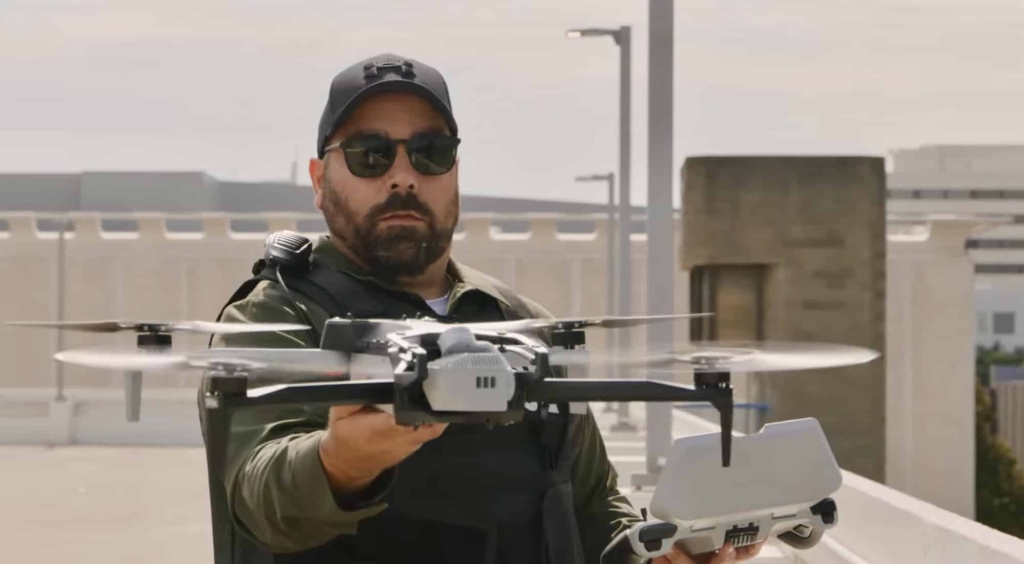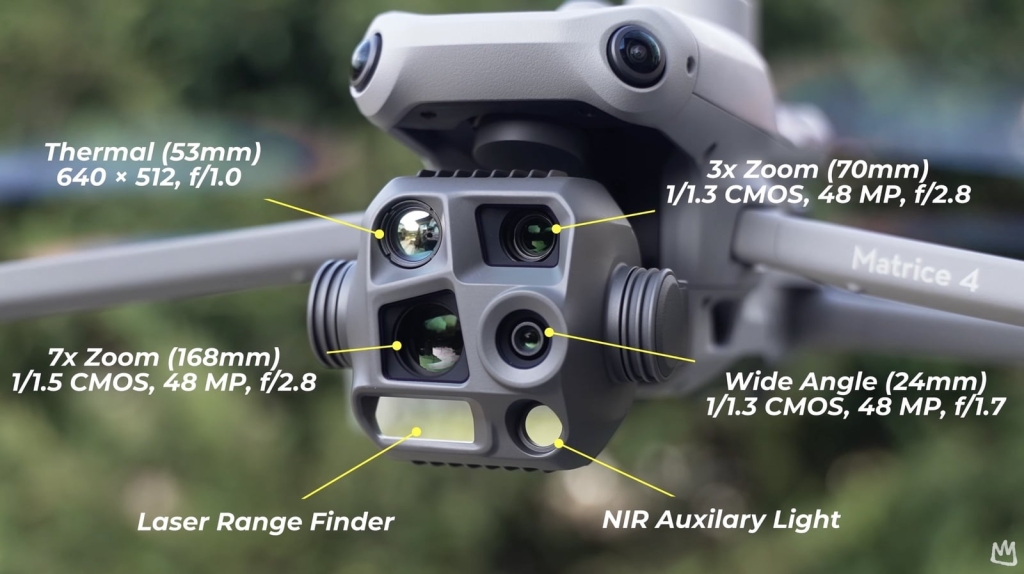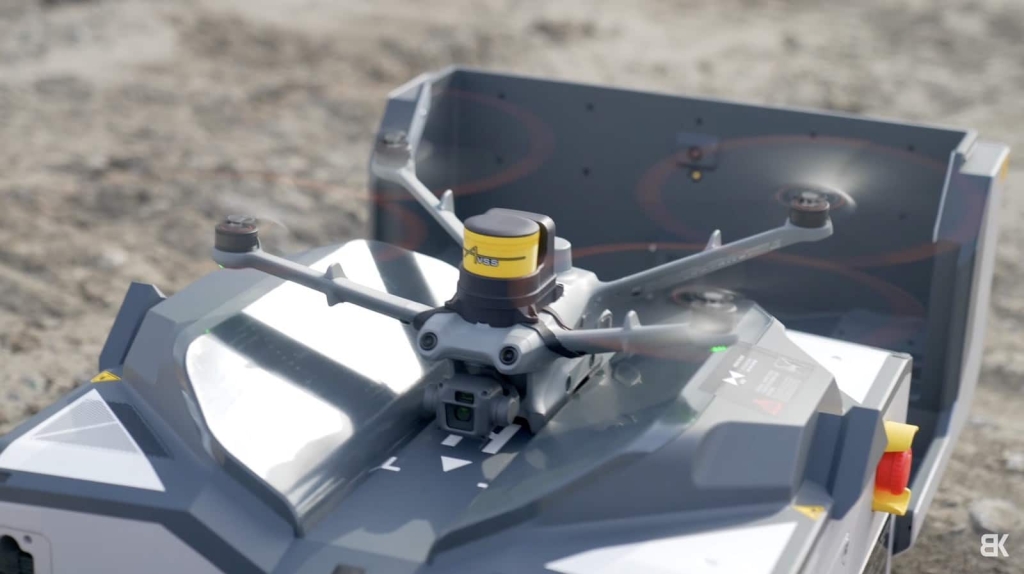AI-Powered Police Drones Reach 1,500 US Departments As Landmark Privacy Lawsuit Tests Legal Limits

Police and sheriff’s departments across America have rapidly embraced AI-powered drones for everything from pursuits and investigations to emergency response, with approximately 1,500 agencies now operating drone programs by late 2024—a 150% increase since 2018. But as departments deploy increasingly sophisticated surveillance technology capable of monitoring biometric data from hundreds of meters away, a landmark California lawsuit could reshape the legal boundaries of warrantless aerial surveillance.
The explosive growth comes as law enforcement agencies face chronic staffing shortages while pressure mounts to reduce violent crime. AI-powered drones offer a cost-effective alternative to helicopters while minimizing dangerous direct encounters between officers and suspects—a priority that intensified after George Floyd’s 2020 murder.
Major Cities Launch Drone Programs in 2025
Just this year, Miami, Cleveland, Columbus, Ohio, and Charlotte-Mecklenburg Police Department in North Carolina have announced new drone programs, according to Axios. Other departments are rapidly expanding existing fleets, with federal grants and state budgets increasingly covering equipment and training costs.
The technology adoption is particularly striking in states grappling with police reform. Minnesota agencies spent more than $1 million on drones in 2023—a 44% jump from the previous year—following intensified scrutiny of law enforcement practices in the state where Floyd was killed.
Advanced AI Capabilities Raise Privacy Concerns
Modern police drones far exceed consumer models in capability. These systems can track ground radar, monitor air quality, read license plates, and reconstruct accident scenes in real-time.
According to Cameron Chell, CEO of Canadian drone maker Draganfly, some platforms can “measure a person’s heart rate, breathing, blood pressure and oxygen levels from 500 meters away” (approximately 1,640 feet).
The drones integrate with comprehensive surveillance ecosystems. Police deploy them in response to 911 calls as “Drone as First Responder” units, collecting vital information before officers arrive. Some systems even deliver emergency supplies like Narcan to overdose victims.

In Albuquerque, police received an FAA waiver to operate drones beyond visual line of sight, enabling pursuit operations.
Spokesman Gilbert Gallegos Jr. told Axios that drones provide officers “more situational awareness and will provide more opportunities to identify suspects immediately after a crime.”
The department credits aerial support with contributing to dramatic decreases in auto theft over eight years.
California Lawsuit Could Set National Precedent
The technology’s rapid expansion faces a critical legal test in Sonoma County, California, where the ACLU Foundation of Northern California filed suit in June 2025 alleging unconstitutional warrantless surveillance.
Since launching in 2019 to monitor illegal cannabis cultivation, Sonoma County’s code enforcement has deployed drones more than 700 times, capturing at least 5,600 images. The lawsuit claims nearly half of today’s flights target unrelated code violations like unpermitted construction, resulting in more than $3 million in fines between 2020 and 2024.

Plaintiff Nichola Schmitz, who is deaf, only discovered a drone surveilling her property when a worker pointed it out. She ran into her bedroom, concerned the drone had photographed her naked after bathing earlier.
“This horrible experience has shattered my sense of privacy and security,” Schmitz said in a statement. “I’m afraid to open my blinds or go outside to use my hot tub because who knows when the county’s drone could be spying on me.”
The lawsuit invokes California’s 1985 People v. Cook ruling, which prohibited warrantless aerial surveillance of private homes. It seeks a permanent injunction against the program and judicial warrant requirements for future flights.
Data Collection Without Clear Safeguards
Privacy advocates warn that the real firepower comes from data analytics.
“Basically, the drone is just flying, taking all the information,” Mauricio Kleinburg, director of technology at security firm Seguritech, told Axios. “The real firepower comes with what you do with analytics, with image AI, or all the sensors in the police central or in the data center.”
But what happens to that data remains murky.
“This idea that they’re collecting such detailed biometric information—information that one would not even have about themselves, and there aren’t very good restrictions around it, is scary,” Beryl Lipton, senior investigative researcher at the Electronic Frontier Foundation, told Axios.
Lipton warned that police could be violating existing laws regarding warrantless imagery from private property, while regulations haven’t kept pace with drones’ data collection and storage capabilities.
DroneXL’s Take
This story represents a pivotal moment for the entire drone industry. We’ve been tracking police drone expansion closely—from Flock Safety‘s $300 million Aerodome acquisition to San Francisco’s $9.4 million DFR expansion—and the pace of adoption has been breathtaking.
The 150% growth since 2018 shows law enforcement has moved decisively past the experimental phase. Drone as First Responder programs are becoming standard infrastructure in major metropolitan areas, and the technology genuinely saves lives and improves emergency response times.
But the Sonoma County lawsuit isn’t frivolous hand-wringing—it’s asking fundamental questions about constitutional protections in the drone era. When code enforcement can hover over your backyard, zoom into your hot tub, and photograph through your windows without a warrant, we’ve crossed a line that makes many Americans deeply uncomfortable regardless of their politics.
The outcome could reshape the entire public safety drone market. If courts rule that aerial surveillance requires warrants, manufacturers like Skydio, DJI, and Flock Safety may need to build warrant-compliance systems into their platforms. DFR programs could face significant operational restrictions. And the nascent industry of AI-powered biometric surveillance from the air might face regulatory headwinds before it truly takes off.
For drone professionals and manufacturers, this is the test case to watch. California often sets precedents that ripple nationwide. The balance between legitimate public safety applications and constitutional privacy protections will define how our industry integrates into American life for decades to come.
What do you think? Share your thoughts in the comments below.
